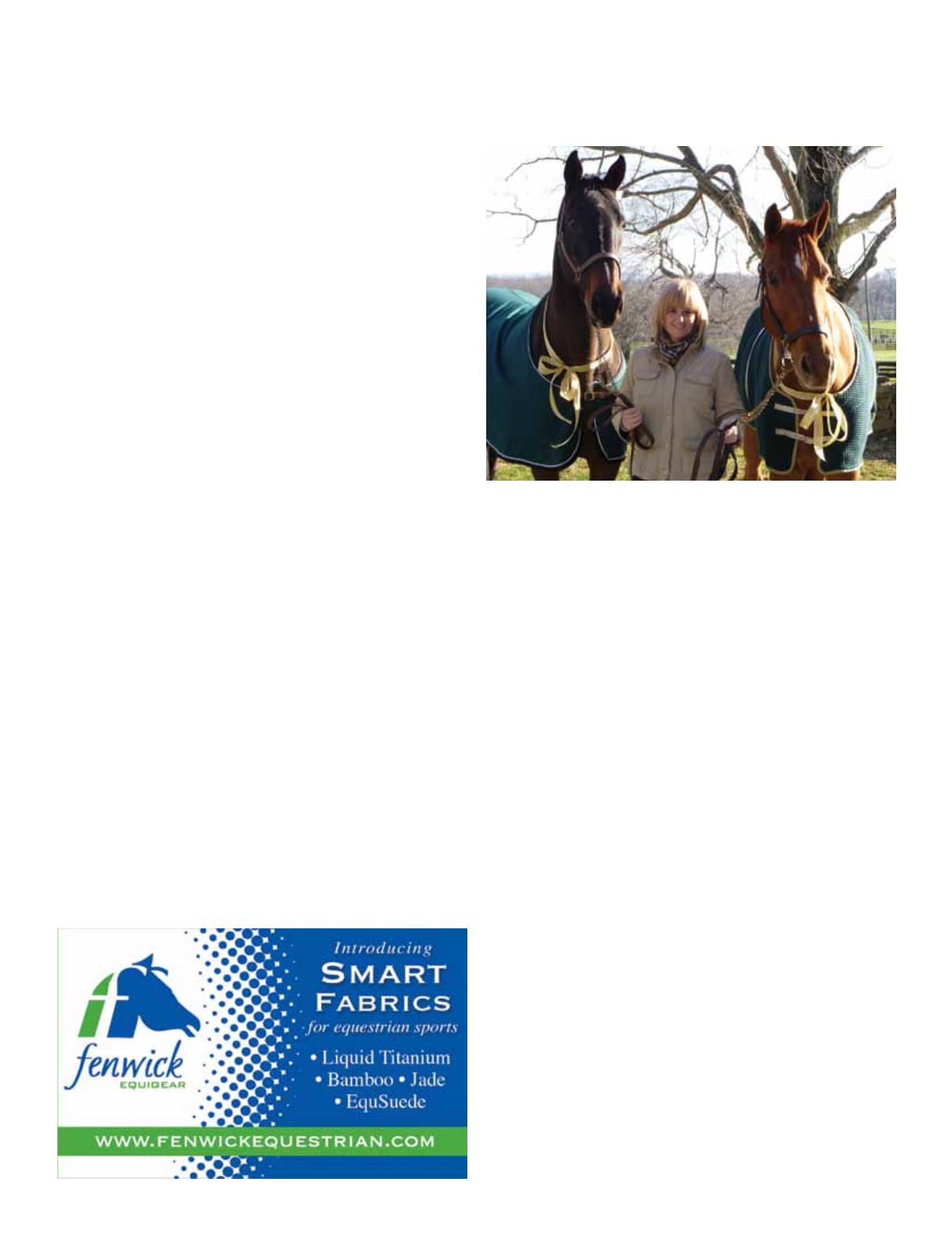
98 SIDELINES SEPTEMBER 2013
FOR HORSE PEOPLE • ABOUT HORSE PEOPLE
e
Sports Psychology
By Ann S. Reilly, Ph.D.
In Europe most equestrian professionals do not show and teach
at the same time. This is different from our training system here in
the U.S. As a competitor and sport psychologist I have assisted
many trainers who show and train simultaneously. It is stressful
to compete and coach at the same time, especially for novice
trainers. This is where early preparation and communication is
crucial for success.
If I find I can’t handle both training and showing I will scratch
my personal classes as I once had to do at the National Horse
Show. It was disappointing personally, but helping my clients
put in effective performances was rewarding and worth the
sacrifice. For me, my client’s best interest is always first and I try
hard to give them 100 percent. I’ve found that putting my clients
first lessens the rate at which my clients move on to other trainers
and decreases the chance of my students feeling they aren’t
getting enough of my attention.
All trainers have their own specific goals and philosophies.
When both you and your clients are showing the same show it is
important to let your riders know what they can expect from you.
Lack of communication can cause a lot of stress and anger.
If you notice that there will be time conflicts, be sure to instruct
your riders on how to prepare their horses on the flat. This way
when you arrive at the ring, flatwork preparation will be done and
you will be ready to enter the ring. Likewise, when you have rider
conflicts, keep the communication going with all of your riders. If
you don’t, riders waiting will begin to think that they might not be
as important to you as your other clients. As I mentioned before,
this may lead to clients feeling the need to move onto another
trainer.
Organizing the horse/rider class schedule the day before helps
riders know what to expect. Knowing the numbers for each class
and calculating approximately when each horse shows will help
reduce conflicts. Getting to know the “ingate” personnel is always
important as they will be the first to work with you regarding your
conflicts, especially if you treat them with kindness and respect.
Most horse shows are “hurry up and wait.” Preparing for that
mentality can help riders learn how to relax, then refocus. Dressage
and Three-Day Event trainers typically have an organizational
advantage as they typically know their exact ride times, barring
weather or injury time changes. Daily group or individual meetings
with your clients discussing expectations and possible delays are
often necessary. Be sure to remind your clients how important
they are.
Ann S. Reilly, Ph.D. is a sport psychologist and author of “A
Sport Psychology Workbook for Riders,” available from amazon.
com. Questions for Ms. Reilly’s column can be addressed to
.
Showing and Training at a Horse Show
Shifting your focus from one task to another effectively is an
important skill to master. The key is focusing your attention on
the present; concentrating on what you are doing or about to
do. Practice this at home while riding and teaching. Imagine
compartmentalizing problems in a file, or box and taking them out
only when you have time to solve them.
A good support team makes riding and training at shows more
successful. Many trainers want to be in control of everything at
shows but this is nearly impossible to do effectively. Hire good help
even if it costs a bit more. You will be more successful, your clients
will be happier and the horses will receive the care they need.
Learn how to delegate responsibility. Work out your delegating
issues and trust your help with what they were entrusted to do.
Don’t forget to praise them for doing a good job.
As a former professor at Sweet Briar College, the Director
of Riding would call on me to help him at shows where he had
many students. He would make a list of what each horse/rider pair
needed for their warm up. I schooled the riders in the warm up ring
and then sent them to him for final preparation at the ingate. He
would then evaluate their rounds and send them back to me with
follow up instructions if needed. This system worked very well.
Early on in my sport psychology career I experienced a lot of
anxiety about “having to be perfect” when showing. I even thought
it would hurt my sport psychology business if I did not perform
perfectly in the show ring. But I have learned through the years
that I was wrong. Clients seem to be more comfortable because I
am an “imperfect” amateur rider and I have experienced some of
the same issues that they have. This statement applies to trainers
as well. Relax, realize that no one is perfect, and keep working
on your weaknesses so your clients will do the same. Clients
will be more comfortable with you as their trainer if they see you
as human and it will help them relax and perform better in your
presence.
I hope my experiences and tips are helpful to you. I do
consulting work with trainers and teachers, so if you ever need
some help please contact me.


